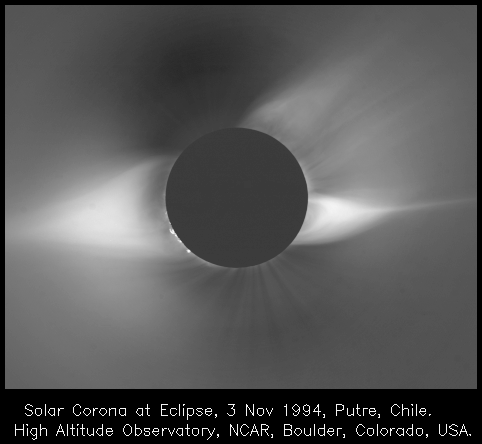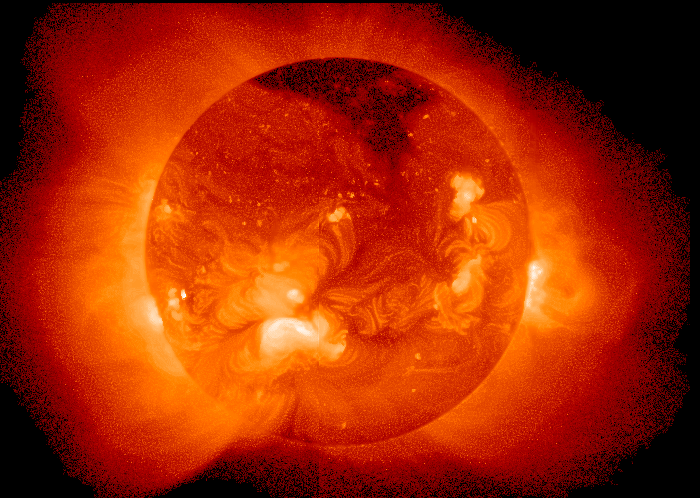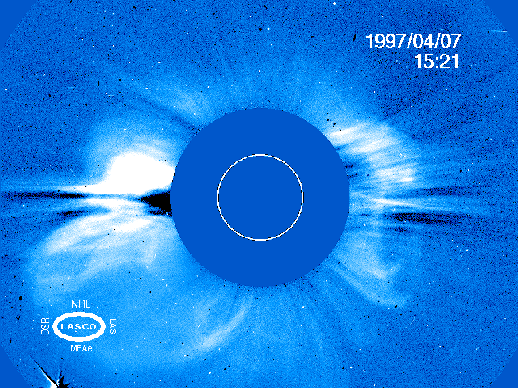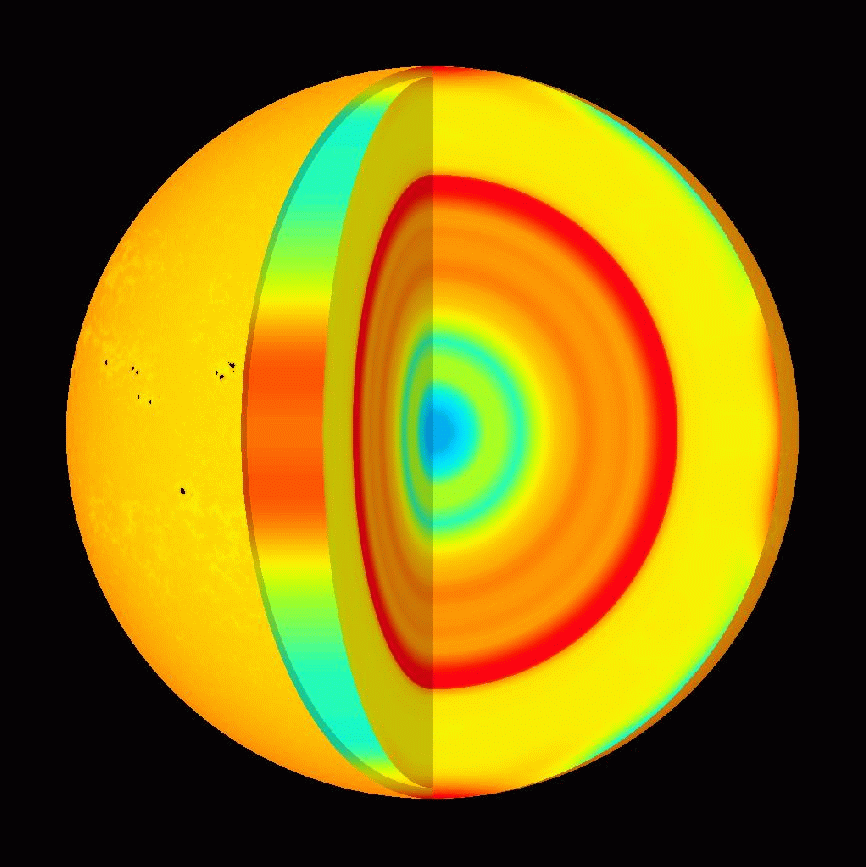



|

|

|

During a total eclipse, the moon completely blocks out the solar disk. What you see is the corona (which means 'crown'), the Sun's outer atmosphere. It's very difficult to see the corona normally because the visible light from the solar surface, the photosphere, is a million times brighter than the light from the corona.
Although the photosphere is a cool 6000 C, the corona is very, very hot - over 1,000,000 C! This problem has puzzled solar physicists for more than 50 years. There are several theories as to why this should be so, none yet fully satisfactory. The corona could be heated by waves travelling up from the photosphere. We know that the magnetic field plays an important role, so changes in the magnetic field could transfer magnetic energy into thermal (heat) energy.
If you look at the Sun in X-ray emission you see only the plasma (ionised gas) at above one million degrees. You can clearly see the structure of the magnetic field. The Sun generally has a dipole magnetic field (like a bar magnet). The dark reagions at the solar poles are called coronal holes, because there is very little hot gas there. The magnetic field lines are open in the polar regions and the corona flows out to form the 'fast' (700 km/s) component of the solar wind. In the equatorial region, the magnetic field is closed and we see bright hot loops of trapped plasma, called active regions. These are locations where sunspots, regions of very strong magnetic field, are seen in visible light. The active regions stretch out into streamers which are the source of the 'slow' (400 km/s!) solar wind. Scattered all over the Sun are small X-ray bright points. Actually they are not that small, they are at least as big as the Earth!

X-ray image from the Soft X-ray Telescope on YOHKOH, a Japanese satellite (ISAS/NASA/UK). YOHKOH is the Japanese for 'sunbeam'.

Above is an image, or rather a montage of two images from SOHO. The inner image of the Sun is taken by the Extreme ultraviolet Imaging Telescope (EIT), which shows plasma at around one million degrees. The outer image is from the UltraViolet Coronagraph and Spectrometer (UVCS) which shows the outer corona. The dark patch running from the solar north pole to the equator is a very large coronal hole, which was called the 'elephants trunk'.

Here is an image taken by the Large Angle Spectroscopic Coronagraph (LASCO) on SOHO, which simulates a total eclipse of the Sun. The white circle shows where the Sun's disk should be (if it were not blocked out). Millions of tons of charged particles, called coronal mass ejections, are shot out into the solar wind and can impact on the terrestial environment, causing problems with satellites, radio blackouts and disruption to electricity supplies.
Seismology is the study of earthquakes and is done by measuring the vibrations of the Earth's surface. Helioseismology is a comparatively new field of solar physics whereby vibrations of the Sun's surface are measured (Helios is the Greek word for Sun).
The waves bouncing around inside the Sun cause the surface of the Sun to move up and down by small amounts, a fraction of one km/s. These small motions can be detected by SOHO and we can learn what is happening deep inside the Sun.

This image was produced from observations by Michelson Doppler Imager (MDI) instrument on the SOHO satellite. It shows the difference between the calculated and predicted speed of sound waves, inside the Sun. In red coloured layers, sound travels faster than predicted by theories. The blue colour means that sound travels slower than expected.
The red layer at about one third of the way down from the surface to the centre of the Sun is thought to be a shear layer just below the solar convection zone. It seems that there may be a lot more turbulence there than predicted. The blue layers in the core of the Sun, indicates that the temperature may be 0.1% cooler than the expected 15 million degrees C. Although this may seem a very small difference, it suggests that the power produced by nuclear fusion may be lower than expected, in fact that it may vary over long time periods.